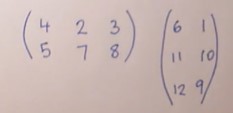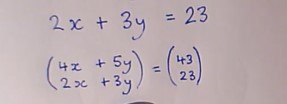Video on Addition and Subtraction of Vectors

Video on Addition and Subtraction of Vectors.

A matrix is a vital tool for solving equations that are difficult to compute using pen and paper. Engineers make use of matrices in a lot of different situations.
A vector is a single column matrix. For GCSE mathematics, you only need to understand about vectors although if you are studying further mathematics and A-level mathematics and beyond, you will need to understand matrices.

Look at using translations and vectors. Start by converting arrows into vectors and then move on to addition of vectors.

Video on Matrix Multiplication. Matrices can be multiplied when the number of rows and the number of columns are equal.

Video on Powers of Matrices. Matrices can be multiplied when the number of rows and the number of columns are equal which means that finding the power of a matrx requires the matrix to have the same number of columns as rows (ie be a square).

Finding the inverse of a matrix depends on you understanding the concept of the identity and the idea that you cannot have a denominator of zero. Once you have these ideas in your head, the inverse matrix becomes much more accessible.

Video on solving simultaneous equations using matrices. This might seem a little long winded for the equations given but once you get your head around it, it offers a viable alternative to the more conventional substitution and elimination methods.